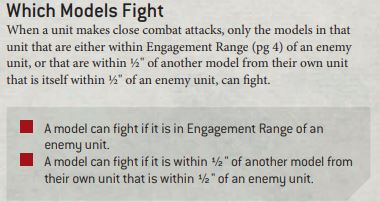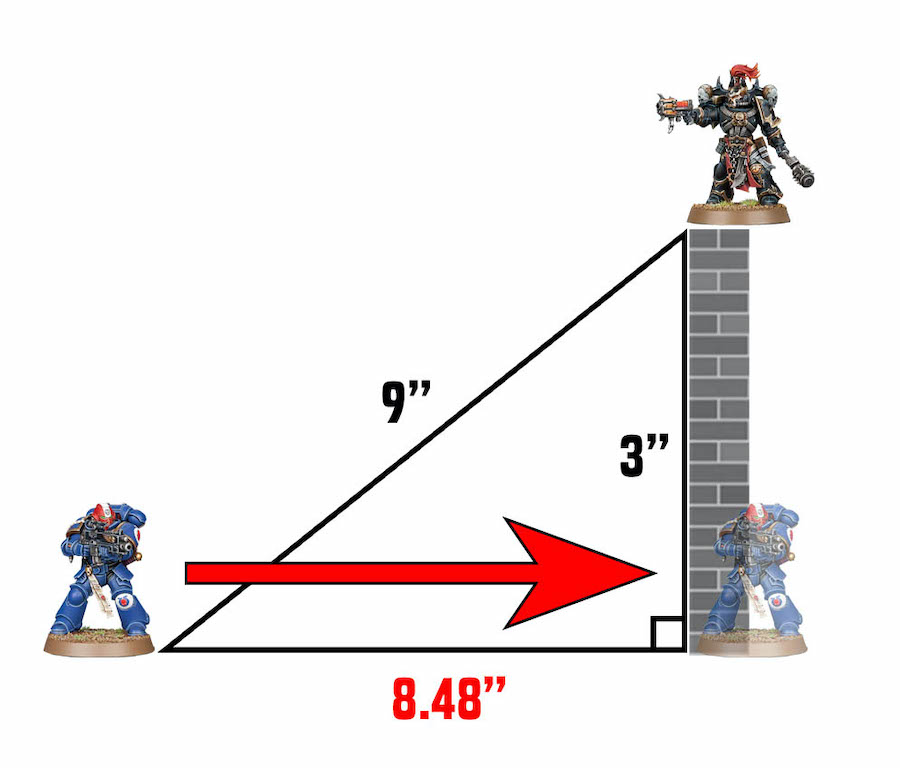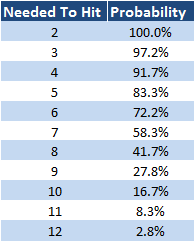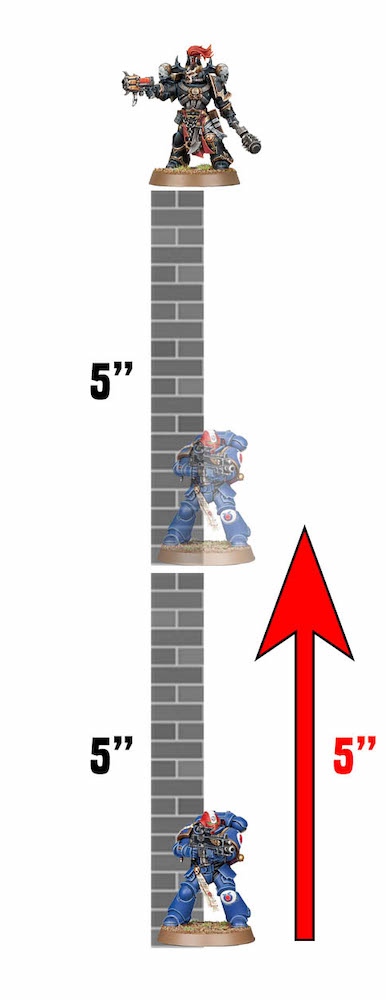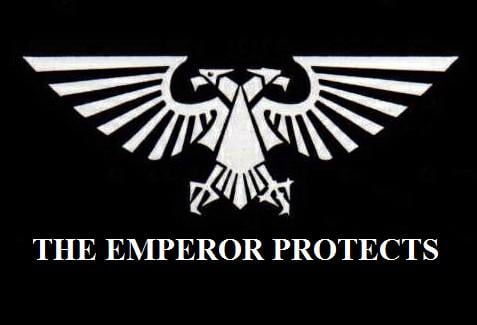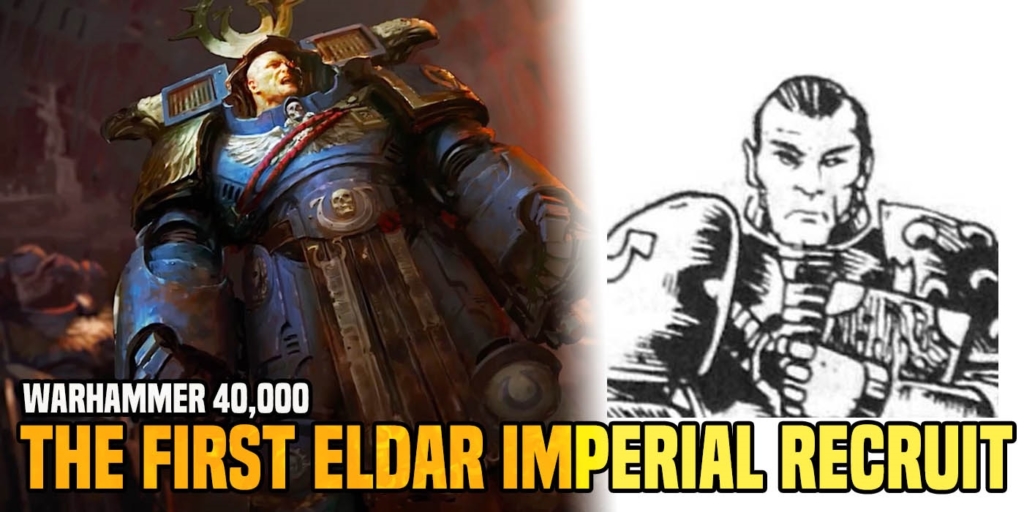Warhammer 40K: How To “Cheat” With Engagement Ranges
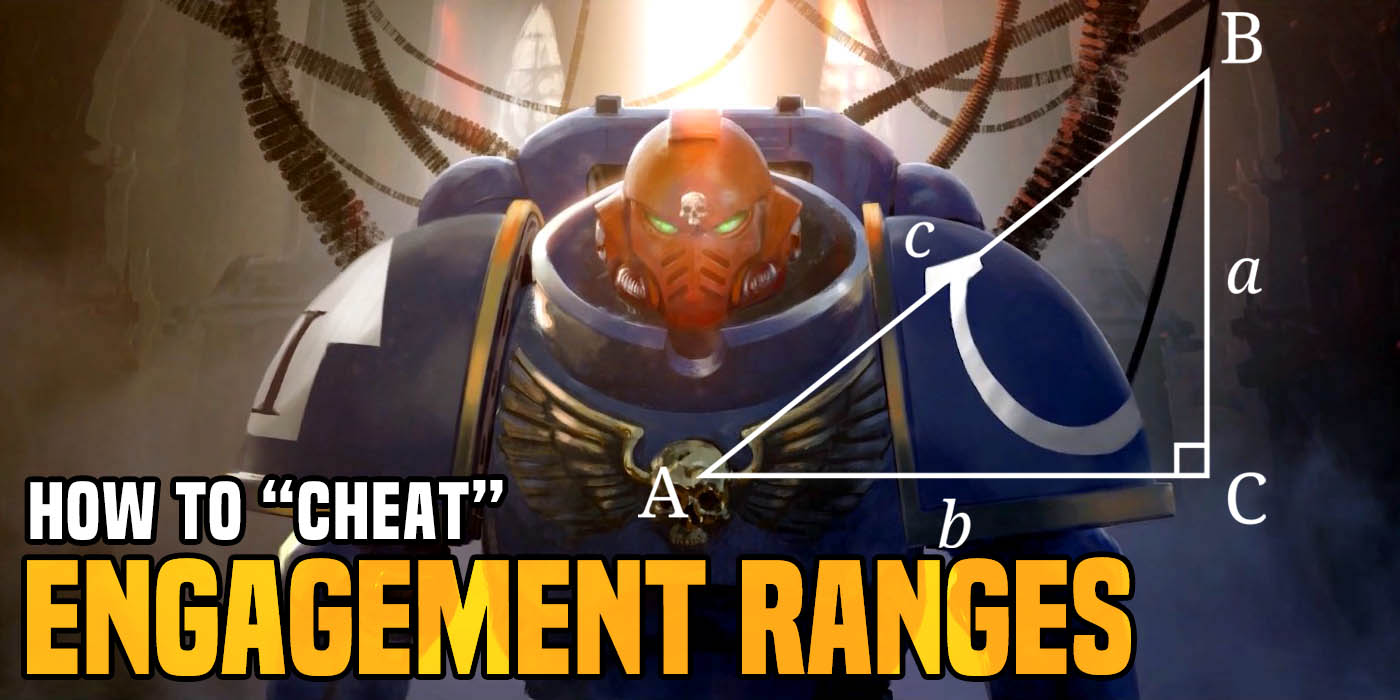

The new 9th Edition Engagement Range rules have some… loopholes.
9th Edition has done a good job of codifying some rules that used to be vaguer. One of these is the new rule about Engagement Range. However, players have noticed that the newly changed rules allow for some… interesting interpretations. While these interpretations appear to be legal, they could be considered by some to fall into the “cheat” or “hack” category. Today let’s take a look at some ways that Engagement Range can be used or abused, depending on how your point of view.
Engagement Range Primer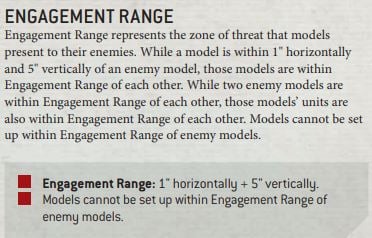
Engagement Range is defined in the 9th Edition rules as simply being within 1″ horizontally and 5″ vertically of an enemy model. While the 1′ horizontal part has been in the game, though not named, since time immemorial, the vertical distance is a new addition. Engagement range is primarily used for three things. Firstly normal movement, you cannot come within Engagement Range of Enemy models. Secondly, it determines what units are “locked” in combat, being in Engagement Range of enemy units can affect what, or how, you can do on your turn. Lastly, Engagement Range determines what units may fight in the combat phase and how, as seen below.
As we can see, Engagement Range is a pretty important game concept and has a significant effect on battles. One last relevant thing to mention here is how distance is measured: 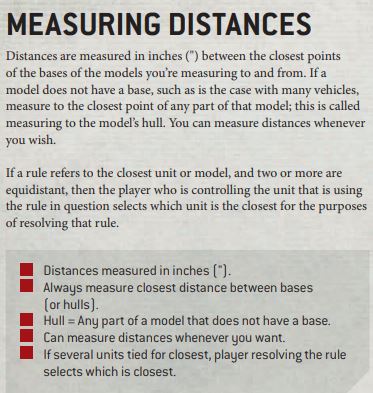
The key take away from this is that you measure the closest points on models bases. If the model doesn’t have a base, you can measure from any point on the model. With those basics done, let’s take a look at some wonky interactions.
Blocking Movement
The first interesting thing you can do is make use of Engagement Range is to block enemy movement in ways that weren’t possible before. You can do this because Engagement Range gives your models an area that the enemy can’t move within, a zone of control of ZoC to some, that only exists on the horizontal plane, but on the vertical as well. Now, terrain comes in all sizes and heights, but two heights are pretty standard. GW’s older “Cities of Death” buildings came in a standard 3″ high per level. While this terrain is no longer in production, it is still very common to find it on tables all over the world and at many major events. GW’s newer Sector Imperialis terrain is 5″ high per level; other terrain comes in all shapes and sizes.
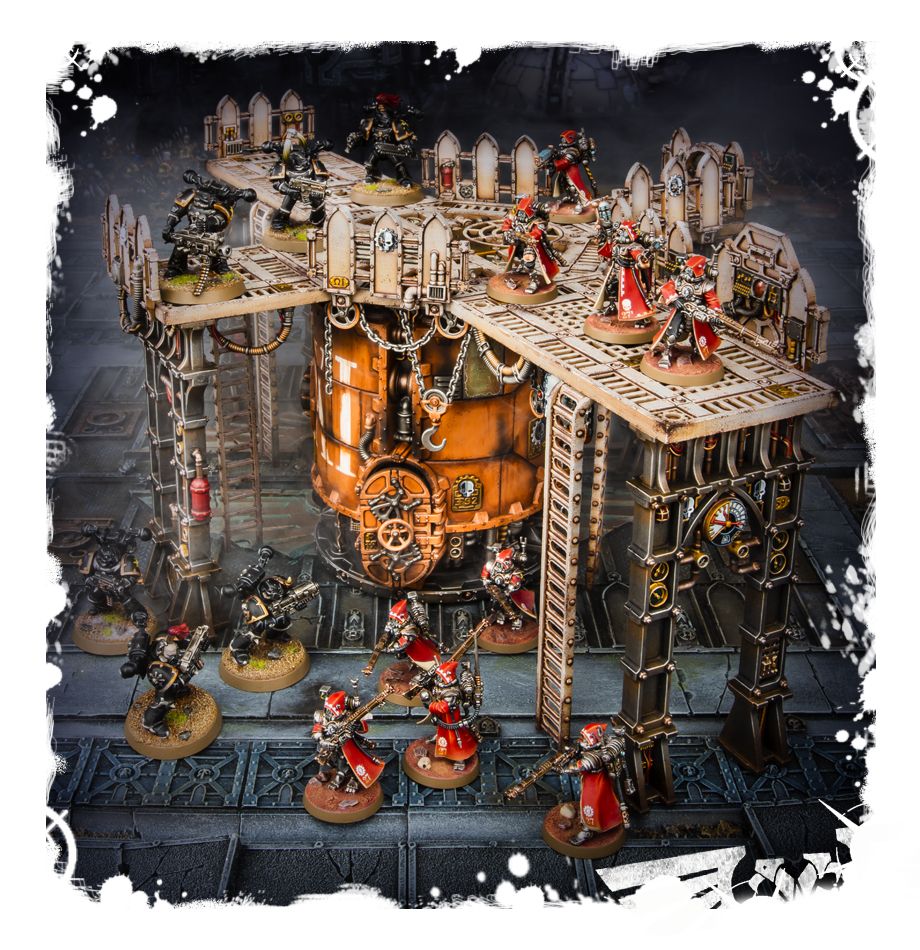 5″ per floor is the new black.
5″ per floor is the new black.
Now bear in mind that a standard GW base is about 3/16″ or 1/2 cm thick. This means since you measure from the closest points on the base, that a model standing 5″ or less off the ground will be in Engagement Range of a model standing beneath them (and within 1″ horizontally). Measuring from the closest points on the base means that you would measure from the top of the ground floor models base to the bottom of the top floor models base. Even if the model is precisely 5″ off the ground, for instance, on a Sector Imperialis building, they would be 3/16″ within the 5″ needed for engagement range. This means that models place on one floor can prevent the enemy from moving on other floors. Likewise, models occupying say a bridge can prevent models from moving under the bridge, even if they are seemingly nowhere near each other.
Assault Triangles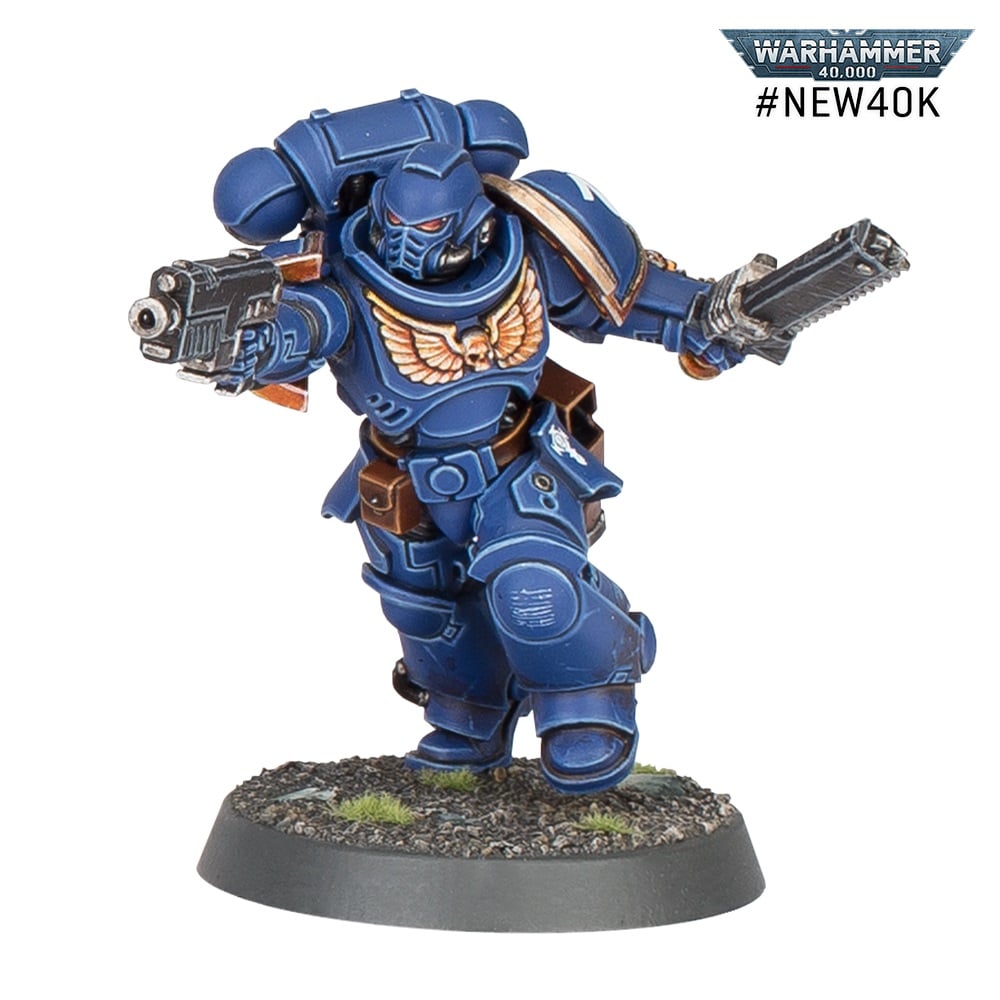
Ready for some math? Well, Engagement Range can also be helped to shorten your charge distance. In particular, they can help your Deep Strikers get their charges off more reliably. First, take some a look at common deep strike wording:
Pretty much all “deep strike” abilities have the same wording, i.e., the unit must be set up more than 9″ away from enemy models. However, since we measure distance base to base, this is a direct line measurement, not along the horizontal or vertical plane. If we think of a right triangle, with the table being the adjacent side, and the distance the enemy model is from the ground being the opposite side, then the distance between your model and the enemy model, the 9″, would form the hypotenuse. However, when charging your model doesn’t have to move along the long hypotenuse to reach the enemy, it only has to travel across the shorter adjacent side, as long as the enemy isn’t more than 5″ off the ground. Using the good old Pythagorean theory, we can see that if the enemy is 3″ (a) off the ground, the old GW terrain height and your hypotenuse is 9″ (c) then the adjacent side comes out to 8.48″ (b) In essence this gets you a whole inch closer to the enemy.
If the enemy is higher, it’s even better for you. Consider if they are 5″ (a) off the ground, and your hypotenuse is again 9″ (c), this gives us a value for b of 7.48″. This means that a standard unit, instead of needing to roll a 9+ on two dice to complete their charge, they only need to hit a 7+.
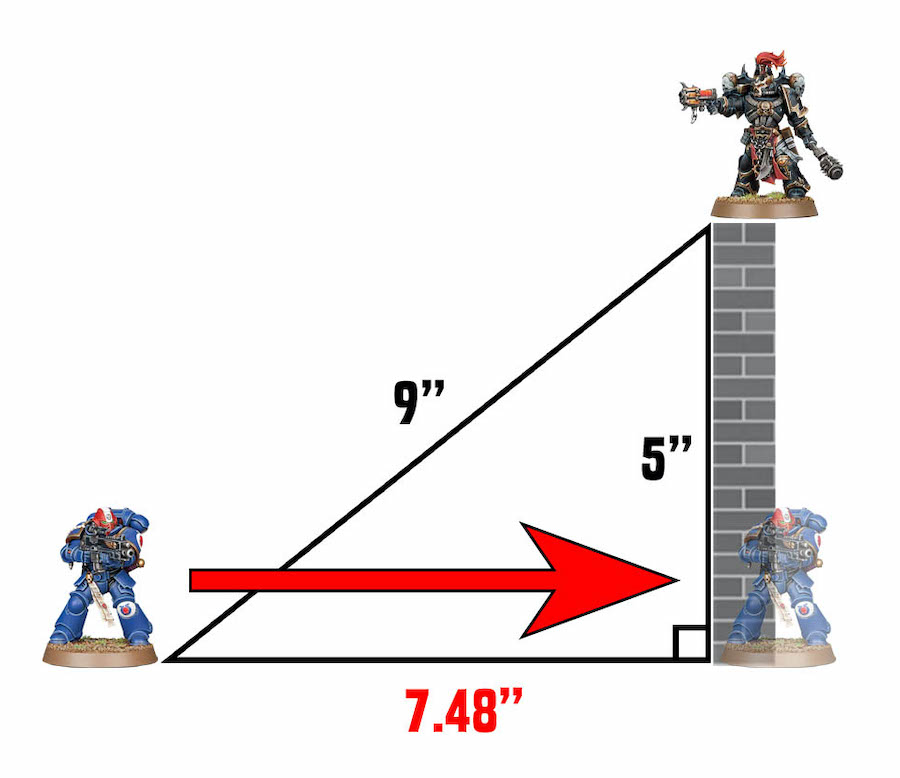
Taking a look at some basic probability math shows that this effectively doubles your chance to make your charge.
The Up/Down Charge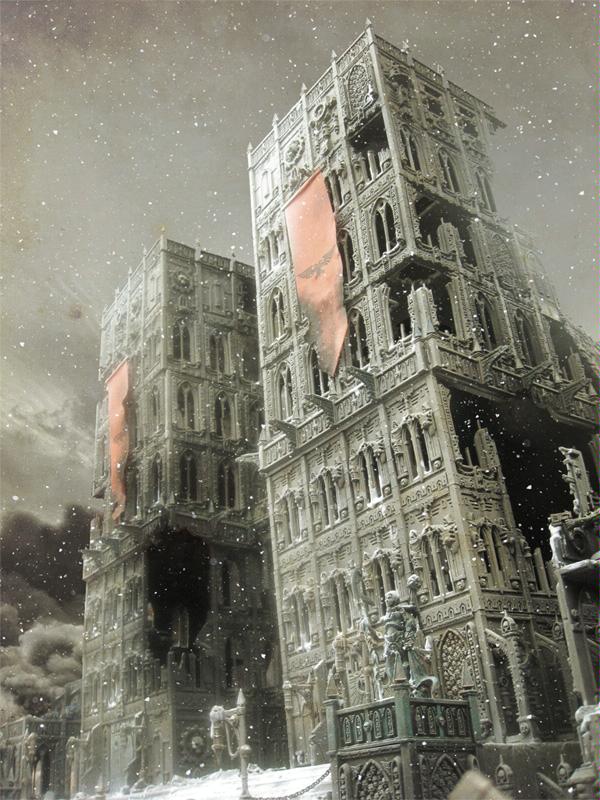
We can see a similar, if less common, phenomenon at work when using multi-storied buildings. Let’s take, for example, a three-storied building. Level 1 is on ground level or 0″ high. Level 2 is 5″ inches tall, while level 3 is 10″ high. A model on level 3 would thus be 10″ off the ground. Under the prior edition of 40K, a model on a bottom level trying to charge one on the top level (or vice versa) would need to make a 10″ charge to reach the same level as the target. However, under the new rules, this model would only have to reach the floor below them, a 5″ charge to get into Engagement Range, taking a long and improbable 10″ charge down to something pretty manageable. There are also a ton of the older GW builds out there, with 3″ floors. In this case, going up to attack a unit on level three would only take a 3″ charge, not a 6″ charge.
This can also be used with Deep Striking as well. If we go back to our 10″ high building, let’s assume a unit is occupying level 3 for clear LOS. An enemy unit could then deep strike onto level 1, since it is 10″ below level 3 and you measure base to base, they would be outside of the 9″ required by their deep strike ability. However, when choosing to assault, they would only need to get to level 2, again giving them a much shorter charge to make.
Can’t Hide From Me
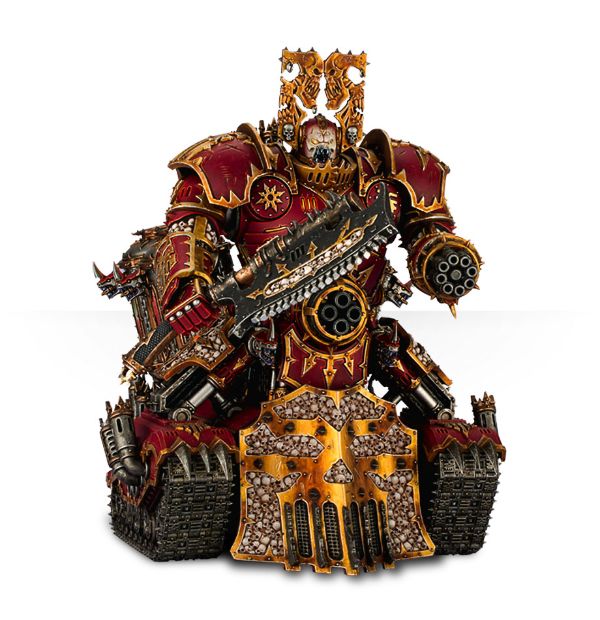 Abaddon always asks me to grab things off the highest shelf in the BattleBarge.
Abaddon always asks me to grab things off the highest shelf in the BattleBarge.
Lastly, we’ve got what I would just call an odd interaction. Since you measure base to base, most models threaten an area 5 and 3/16″ high. Models without bases though threaten, and can thus control/attack, much higher. Where this gets really odd is with Knights, these huge models do have bases, and as such, measure engagement range from them, limiting them to the 5 and 3/16″ threat range. For many Knights, this is shorter than the actual model (a Castellan, for instance, is 7″ but I guess it can’t raise its arms high). However, some other similar units, most noticeable the Lord of Skulls and the Stompa don’t have bases and as such measure from any part of the model. This gives these models closer to 15″ high threat range, allowing them to potential attack models on four levels of a building (assuming each level is 5″, it would be more with smaller floors). Again this isn’t so much a cheat as it is just an odd rule interaction. It could potentially make the new Invader ATV useful as it doesn’t appear to have a base…
Final Thoughts
So there we have just a few ways to take advantage of, or potentially misuse, Engagement Range. These strategies are a bit “gamey,” but also just take advantage of basic math, which I’m a big fan of. I can’t say I like them, but they are valid to use. Maybe we will see some FAQs to close these loopholes. Changing all the deep strike rules to being more than 9″ away horizontally would actually fix most of these, and some other weird loopholes. Even if they did that, one net effect would still be that in a lot of instances it will be easier to charge models on different floors of a building, making height a bit less of an advantage. For now, it is up to you if you want to make use of these tactics, but you should be aware of them. Forewarned is forearmed.
Let us know what you think of these new rules, down in the comments!

